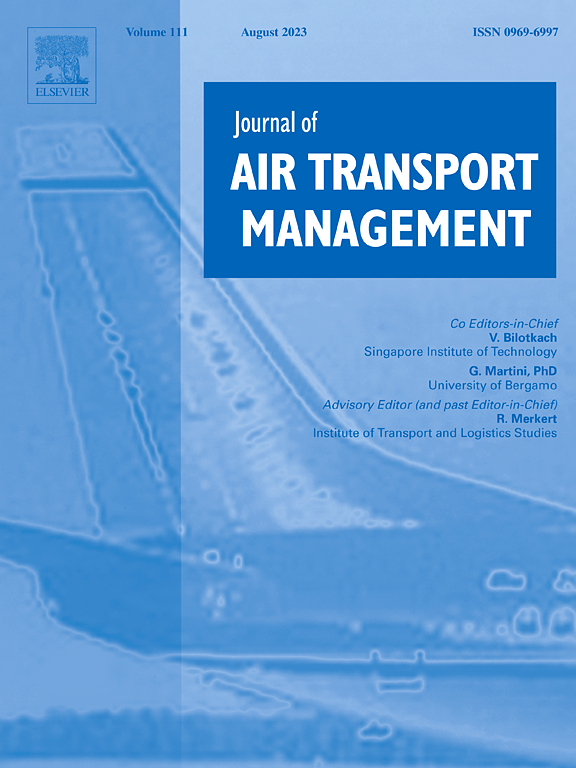Accurate and fast-converging trajectory prediction based on Long Short-Term Memory neural networks
IF 3.6
2区 工程技术
Q2 TRANSPORTATION
引用次数: 0
Abstract
With the emergence of Urban Air Mobility (UAM), the safety and efficiency of airspace operations will largely depend on the necessary evolutions of conventional Air Traffic Management (ATM) decision support systems. In this context, trajectory predictionwill be one of the most critical functions in future air traffic deconfliction services, and suitable algorithms will have to be implemented in both ground-based and airborne systems. These algorithms must be far more accurate, efficient and flexible than in present-day ATM. This study introduces a Long Short-Term Memory (LSTM)-based adjustable interpolation algorithm, which can be incorporated into future UAM decision support system architectures. In the absence of UAM operational data, the verification of the proposed algorithm focuses on a series of scenarios encompassing both airliner and helicopter flight trajectories. Results demonstrate that the proposed method reduces computation time by half without significantly sacrificing prediction accuracy compared to conventional linear interpolation methods. Furthermore, accuracy improvements of at least 50% are achieved compared to raw data, with no substantial increase in computational time. Additionally, the algorithm complexity is evaluated via big O notation analysis, showing that our proposed approach allows to train accurate prediction models efficiently even when a large amount of training iterations is required. With further developments, this algorithm shows high potential as the foundation trajectory prediction for UAM services in dense urban airspace, enhancing conflict detection and resolution capabilities and mitigating risks.
基于长短期记忆神经网络的精确快速收敛轨迹预测
随着城市空中交通(UAM)的出现,空域运行的安全和效率将在很大程度上取决于传统空中交通管理(ATM)决策支持系统的必要演变。在这种情况下,轨迹预测将成为未来空中交通消除冲突服务中最关键的功能之一,并且必须在地面和机载系统中实施合适的算法。这些算法必须比现在的ATM准确、高效和灵活得多。本研究提出了一种基于长短期记忆(LSTM)的可调插值算法,该算法可用于未来的UAM决策支持系统架构。在没有UAM运行数据的情况下,所提出算法的验证主要集中在包括客机和直升机飞行轨迹的一系列场景上。结果表明,与传统的线性插值方法相比,该方法在不显著牺牲预测精度的前提下,减少了一半的计算时间。此外,与原始数据相比,精度至少提高了50%,而计算时间没有大幅增加。此外,通过大O符号分析来评估算法的复杂性,表明我们提出的方法允许在需要大量训练迭代的情况下有效地训练准确的预测模型。随着进一步的发展,该算法具有很大的潜力,可以作为密集城市空域UAM业务的基础轨迹预测,增强冲突检测和解决能力,降低风险。
本文章由计算机程序翻译,如有差异,请以英文原文为准。
求助全文
约1分钟内获得全文
求助全文
来源期刊

Journal of Air Transport Management
TRANSPORTATION-
CiteScore
12.40
自引率
11.70%
发文量
97
期刊介绍:
The Journal of Air Transport Management (JATM) sets out to address, through high quality research articles and authoritative commentary, the major economic, management and policy issues facing the air transport industry today. It offers practitioners and academics an international and dynamic forum for analysis and discussion of these issues, linking research and practice and stimulating interaction between the two. The refereed papers in the journal cover all the major sectors of the industry (airlines, airports, air traffic management) as well as related areas such as tourism management and logistics. Papers are blind reviewed, normally by two referees, chosen for their specialist knowledge. The journal provides independent, original and rigorous analysis in the areas of: • Policy, regulation and law • Strategy • Operations • Marketing • Economics and finance • Sustainability
 求助内容:
求助内容: 应助结果提醒方式:
应助结果提醒方式:


